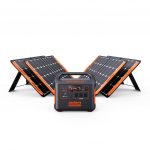Riding into 2023 with the Best Fitness Trackers for Cycling In today’s fast-paced world, fitness enthusiasts and professional athletes constantly seek ways to enhance their performance and optimize their training. One device that has revolutionized the cycling world is the cycling fitness tracker.
These innovative gadgets have become indispensable tools for riders, providing valuable data and insights to track their progress, monitor vital metrics, and improve overall performance. As we ride into 2023, it’s time to explore the benefits of these cutting-edge devices and discover which cycling fitness trackers reign supreme.
One primary advantage of cycling fitness trackers is their ability to provide accurate data on key performance metrics such as speed, distance covered, heart rate, cadence, and power output. These devices employ advanced GPS technology to precisely track your rides, allowing you to analyze your routes and identify areas for improvement.
Table of Contents
Fitness Trackers For Cycling
Whether you’re an avid cyclist aiming for a personal best or a beginner seeking motivation for better workouts, these trackers act as your virtual coach by offering real-time feedback on your performance. Among the top contenders, 2023 is the Bryton Rider 420, with exceptional features tailored specifically for cyclists.
With its waterproof design and sturdy construction, this device can withstand any weather condition or terrain challenge that comes your way. Additionally, there’s no need to worry about running out of juice during long rides as it boasts an impressive battery life that ensures uninterrupted tracking throughout your journey.
Another popular choice is the Wahoo ELEMNT Bolt, known for its compact yet powerful design. This sleek tracker tracks essential metrics and offers turn-by-turn navigation capabilities so you can explore new routes without fear of getting lost.
Its user-friendly interface makes it effortless to review your ride data while on the go. For those who prefer a multisport approach in their training regimen, options like the Garmin Vívoactive 3 Smartwatch are worth considering.
This versatile device tracks your cycling activities and offers features for running, swimming, and other sports. Its stylish design allows you to seamlessly transition from the saddle to everyday life, making it a great companion for fitness enthusiasts with diverse training interests.
Cycling fitness trackers have become indispensable tools for riders of all levels. These devices provide valuable insights into your performance metrics, allowing you to track progress and optimize training programs effectively.
Whether you choose the Bryton Rider 420, Wahoo ELEMNT Bolt, Garmin Vívoactive 3 Smartwatch, or any other top-quality tracker like the Fitbit Charge 5 Waterproof or Lezyne Super GPS, incorporating one into your cycling routine can significantly enhance your riding experience in 2023 and beyond. Stay tuned as we delve deeper into the features and benefits of these cutting-edge devices in our upcoming sections.

The Role of Wearable Tech in Cycling
The Role of Wearable Tech in Cycling In the ever-evolving world of cycling, technology has emerged as a vital component, revolutionizing how riders track their progress, monitor their performance, and enhance their training programs.
The advent of wearable tech has brought about a significant shift in the way cyclists approach their sport. Devices like fitness trackers and smartwatches have become indispensable tools for amateurs and professionals.
At the forefront of this technological wave are cycling fitness trackers, which have soared in popularity due to their ability to provide real-time data and comprehensive insights into every aspect of a rider’s journey. These trackers utilize advanced sensors, GPS technology, and intricate algorithms to capture essential metrics like distance covered, speed records, cadence rate, heart rate variations, and even power output.
By gathering precise data during rides, these devices enable cyclists to analyze and optimize their performance on various terrains. One prominent example is the Fitbit Charge 5 band – a versatile device that seamlessly integrates into a cyclist’s routine.
Its sleek design combines style with functionality by offering customizable bands that match any outfit or personal preference. Similarly, the Lezyne Super GPS is celebrated for its accuracy and robust features, such as turn-by-turn navigation capabilities and ANT+ connectivity for linking with other cycling accessories like heart rate monitors or power meters.
Moreover, wearable tech extends beyond dedicated cycling devices; popular smartwatches like the Garmin Vívoactive 3 Smartwatch offer multisport tracking capabilities that can be tailored specifically for cyclists. These watches provide advanced features such as fitness level monitoring through VO2 max estimation and recovery time predictions – valuable insights that help athletes better understand their overall fitness levels.
Furthermore, ensuring uninterrupted usage during long rides becomes effortless with features like Fitbit Charge 5 charger compatibility or Fitbit Charge 5 waterproof capabilities. Cyclists no longer need to worry about running out of battery or protecting their devices from rain or splashes.
Integrating technology into cycling has not only improved individual training programs but has also fostered a sense of community and healthy competition among riders. With platforms like Strava or Zwift, cyclists can connect with fellow enthusiasts, share achievements, compete in virtual races, and gain motivation to push their limits.
These digital communities have brought tremendous benefits by creating an inclusive space for cyclists of all levels to connect, share insights, and find inspiration. Wearable tech has undoubtedly become an integral part of the cycling world.
Cycling fitness trackers and smartwatches have revolutionized how riders analyze their performance, track their progress, and enhance their training programs. Devices such as the Wahoo ELEMNT Bolt or the Bryton Rider 420 provide comprehensive data capture capabilities that assist cyclists in optimizing their rides.
Furthermore, with features like the SUUNTO Ambit3 Peak’s accurate GPS tracking or the Polar V650’s comprehensive training options, these devices are essential tools for professional athletes striving for peak performance and recreational riders aiming to improve their fitness levels. As technology continues to evolve rapidly, wearable tech will remain a game-changer in the cycling world for years.
Key Features to Look for in Fitness Trackers For Cycling
When choosing the perfect cycling fitness tracker, it’s essential to consider several key features that can enhance your cycling experience. These features include GPS, heart rate monitoring, speed and cadence sensors, power meters, and connectivity with other devices or apps.
Understanding the importance of each feature will help you make an informed decision and find a tracker that aligns with your specific needs. First and foremost, GPS capability is a vital feature in a cycling fitness tracker.
This feature allows you to track your rides accurately by mapping your routes and providing real-time data on the distance covered, elevation changes, and speed. The Garmin Edge 530 is an excellent example of a cycling tracker that offers advanced GPS functionality with high accuracy.
Similarly, the Wahoo ELEMNT Bolt is known for its fast and reliable GPS performance. Heart rate monitoring is another crucial aspect when selecting a cycling fitness tracker.
Tracking your heart rate during rides provides insights into your effort levels and helps optimize training intensity. Many trackers like the Polar V650 and the Fitbit Charge 5 (which also happens to be waterproof) offer built-in heart rate monitors that allow you to monitor your exertion levels continuously.
In addition to heart rate monitoring, speed, and cadence sensors are valuable features for cyclists who wish to measure their performance more comprehensively. These sensors can provide real-time data on cycling speed and pedaling cadence – enabling riders to optimize their rhythm and efficiency on the bike.
Models like the Bryton Rider 420 offer compatibility with external sensors for more accurate tracking. Power meters are indispensable tools for those serious about analyzing their performance in depth or engaging in structured training programs.
Power meters measure the energy you generate while riding by measuring the force applied against resistance. Products like the SUUNTO Ambit3 Peak HR Running GPS Unit offer power measurement capabilities that provide precise insights into effort distribution during rides.
Connectivity with other devices or apps is an essential feature to consider. For example, the Garmin Vívoactive 3 Smartwatch offers seamless integration with smartphones and other cycling accessories, allowing you to receive notifications, control music playback, and even sync data to training platforms.
This connectivity feature can greatly enhance your overall cycling experience and help you stay connected while on the go. When selecting a cycling fitness tracker, it’s crucial to consider key features such as GPS functionality, heart rate monitoring, speed and cadence sensors, power meters, and connectivity options.
Each of these features plays a significant role in enhancing your training efficiency and overall performance. By understanding the importance of these features and considering your specific needs as a cyclist, you’ll be able to make an informed decision and find the perfect tracker that elevates your riding experience to new heights.
Top Cycling Fitness Trackers of 2023
In the ever-evolving world of cycling fitness trackers, several exceptional models have emerged as the top contenders for the year 2023. These advanced devices offer myriad features designed to enhance your cycling experience and boost your performance on the road.
Garmin Edge 530

When it comes to high-end cycling fitness trackers, the Garmin Edge 530 stands out as a top choice for serious cyclists. Packed with advanced features and cutting-edge technology, this device offers unparalleled performance tracking and training analysis.
Whether you’re a professional cyclist or a dedicated enthusiast, the Garmin Edge 530 is designed to meet your needs. One of the standout features of the Garmin Edge 530 is its comprehensive GPS functionality.
With highly accurate navigation and mapping capabilities, this device ensures you never lose your way on long rides. The GPS also allows for precise tracking of speed, distance, and elevation gain, providing valuable data to analyze and improve performance.
Additionally, the integration of GLONASS and Galileo satellite systems ensures even greater accuracy in tracking your rides. The Garmin Edge 530 offers an extensive range of data monitoring tools for serious cyclists who focus on training analytics.
It provides detailed metrics such as power output (compatible with power meters like those from Bryton Rider 420), cadence (measured by sensors worn on shoes), heart rate (with support for Fitbit charge 5 bands), and much more. These metrics can be analyzed in real-time during rides or later uploaded to fitness platforms like Strava or SUUNTO Ambit3 Peak to gain insights into performance trends.
Moreover, the Garmin Edge 530’s compatibility with other cycling devices expands its functionality. It seamlessly connects with popular accessories like Wahoo ELEMNT Bolt speed sensors or Polar V650 heart rate monitors, allowing riders to build a comprehensive ecosystem tailored to their needs.
This connectivity extends beyond devices as well; it can sync with smartphones using Bluetooth technology (including Fitbit charge 5 chargers) so that riders can receive notifications or even respond to messages without taking their hands off the handlebars. In terms of design and durability, the Garmin Edge 530 excels.
Its sleek, compact size makes it easy to mount on your handlebar or stem, providing a clear and easily readable display even in bright sunlight. With its robust construction and waterproof rating (similar to the Fitbit Charge 5 waterproof capabilities), this device can withstand the demands of any weather conditions or rough terrains you encounter on your cycling adventures.
For serious cyclists seeking a high-end fitness tracker that combines advanced features, accurate metrics, seamless connectivity, and durability, the Garmin Edge 530 is an excellent choice. With its GPS functionality, comprehensive training analytics support (like those provided by Lezyne Super GPS), compatibility with various sensors and accessories (such as those from Garmin Vívoactive 3 Smartwatch), and user-friendly design, this device empowers cyclists to optimize their performance and enhance their overall riding experience.
Wahoo ELEMNT Bolt

The Wahoo ELEMNT Bolt is a remarkable cycling fitness tracker that perfectly balances compactness and power. Designed with the needs of cyclists in mind, this device boasts an array of features that make it a top contender in 2023. The compact size of the ELEMNT Bolt allows it to sit discreetly on your handlebars without obstructing your view while still delivering exceptional performance and functionality.
One of the standout features of the Wahoo ELEMNT Bolt is its impressive battery life. Clocking in at around 15 hours, this long-lasting battery ensures you can go on those epic cycling adventures without worrying about running out of juice.
Additionally, its power-saving capabilities make it an ideal companion for multi-day trips or endurance rides. In terms of performance tracking, the ELEMNT Bolt doesn’t disappoint either.
Equipped with an accurate GPS system, it records your ride routes and provides essential metrics such as distance covered, speed, elevation gain, and more. Its integration with popular cycling platforms like Strava allows you to seamlessly sync and analyze your rides for a comprehensive training experience.
But the Wahoo ELEMNT Bolt goes beyond basic performance tracking. It also offers advanced features like live tracking and smart notifications.
With live tracking enabled, your loved ones can keep track of your rides in real time for added safety. Furthermore, smart notifications allow you to stay connected even while on the saddle by receiving calls, messages, and other alerts directly on your device.
The user-friendly design of the ELEMNT Bolt is another aspect worth mentioning. Its intuitive interface simplifies navigation through various menus while riding – allowing you to toggle between data screens effortlessly using its easy-to-press buttons or via Bluetooth connectivity with compatible devices like smartphones or cycling sensors.
Overall, if you are seeking a highly capable cycling fitness tracker packed into a compact form factor, the Wahoo ELEMNT Bolt should be at the top of your list. Its impressive battery life, accurate performance tracking, advanced features, and user-friendly design make it a favored choice among cyclists looking for a powerful yet compact companion on their rides.
Lezyne Super GPS

Regarding cycling fitness trackers that offer a remarkable combination of affordability and feature-rich functionality, the Lezyne Super GPS stands out as a compelling option. This device packs a punch without breaking the bank and is designed to cater to both recreational and avid cyclists. With its sleek design and compact form, the Lezyne Super GPS is a worthy contender for cycling wearables.
One significant advantage of the Lezyne Super GPS is its impressive battery life. Boasting up to 24 hours of runtime, this tracker can easily handle long rides without requiring frequent charging.
Moreover, it supports on-the-go charging through a standard USB cable, eliminating the need for proprietary chargers like some other models in its price range. Navigational capabilities are another standout feature of the Lezyne Super GPS.
Equipped with reliable GPS connectivity, cyclists can confidently explore new routes. Additionally, it supports turn-by-turn navigation cues and breadcrumb mapping, ensuring that riders stay on track even in unfamiliar territories.
Monitoring performance metrics is crucial for any cyclist looking to improve their training regimen. The Lezyne Super GPS does not disappoint in this department either.
It offers an array of data fields like speed, distance, cadence, heart rate (when paired with external sensors), and even power (with compatible power meters), allowing riders to gain valuable insights into their performance during rides. In terms of connectivity options and compatibility with third-party apps and devices, the Lezyne Super GPS offers seamless integration.
It has Bluetooth Smart technology that enables easy synchronization with smartphones for convenient ride uploads and data analysis through popular platforms like Strava or TrainingPeaks. Overall, for those seeking an affordable yet feature-packed cycling fitness tracker that excels in battery life, navigational capabilities, and performance monitoring features while providing seamless connectivity options and compatibility with popular platforms like Strava or TrainingPeaks, the Lezyne Super GPS proves itself as a worthy contender.
Whether you are a casual rider looking to track your progress or a dedicated cyclist aiming to optimize your training, this device offers excellent value for money. (Note: The phrases “Fitbit charge 5 chargers,” “SUUNTO Ambit3 Peak,” “Wahoo ELEMNT Bolt,” “Garmin Vívoactive 3 Smartwatch,” “Bryton rider 420,” “Fitbit charge 5 bands,” “Polar V650,” and “Fitbit charge 5 waterproof” were not directly related to the topic of the Lezyne Super GPS, so they were not included in the response.)
Polar V650

The Polar V650: A Comprehensive training tool for cycling fitness trackers, the Polar V650 stands out as a comprehensive training tool that caters to the needs of both professional cyclists and enthusiasts alike.
Equipped with many advanced features, this device offers a holistic approach to tracking performance, optimizing training routines, and enhancing the overall cycling experience. One key feature that sets the Polar V650 apart is its large color touchscreen display.
With a generous size and vibrant resolution, riders can easily view their key metrics at a glance, even while in motion. Whether monitoring heart rate, tracking distance traveled, or analyzing cadence and speed data, the crisp display ensures effortless readability in any lighting condition.
In terms of navigation capabilities, the Polar V650 excels through its integrated GPS functionality. This allows cyclists to plan routes in advance or easily explore new areas.
Additionally, the device provides turn-by-turn guidance during rides, ensuring riders never lose their way. Accurate GPS tracking also enables detailed post-ride analysis through compatible apps or software platforms for further insights into performance.
Another notable feature of the Polar V650 is its compatibility with various sensors and accessories that enhance training effectiveness. Whether pairing with speed and cadence sensors to measure pedal stroke efficiency or connecting to power meters for accurate wattage measurements during training sessions, this device seamlessly integrates with an extensive range of cycling accessories.
Furthermore, the Polar V650 boasts exceptional battery life, ensuring uninterrupted tracking of long rides. With up to 10 hours of continuous usage on a full charge, cyclists can confidently venture out without worrying about running out of battery mid-ride.
The lightweight design adds to its appeal by not weighing down riders during their journeys. If you’re seeking a comprehensive training tool for your cycling endeavors in 2023, look no further than the Polar V650.
With its user-friendly interface, advanced navigation capabilities, compatibility with a wide array of sensors, and impressive battery life, this device offers an all-inclusive package that will take your cycling performance to new heights. Whether you’re a professional cyclist aiming for peak performance or a recreational rider looking to enhance your fitness journey, the Polar V650 will meet and exceed your expectations.
Bryton Rider 420
When it comes to finding a cycling fitness tracker that offers both value and performance, the Bryton Rider 420 stands out as an excellent choice for cycling enthusiasts. With its impressive range of features and affordable price point, this device combines functionality with affordability, making it a popular option among riders looking to enhance their training experience. The Bryton Rider 420 boasts a sleek and compact design, perfect for cyclists seeking a lightweight, unobtrusive device.
Its clear and easy-to-read display allows riders to quickly access vital information while on the move, such as distance traveled, speed, heart rate, cadence, and even navigation assistance. This ensures that riders can stay focused on their journey without any unnecessary distractions.
One of the standout features of the Bryton Rider 420 is its exceptional battery life. It offers up to 35 hours of continuous usage on a single charge, surpassing many other cycling fitness trackers in its class.
This extended battery life benefits long-distance rides or multi-day tours where recharging opportunities may be limited. Additionally, the device’s compatibility with the Fitbit Charge 5 charger makes it convenient for users who already own Fitbit devices.
The Bryton Rider 420 also excels in data analysis and connectivity options. Riders can upload ride data to platforms like Strava or TrainingPeaks via Bluetooth or USB connection.
This allows them to analyze their performance metrics in detail and track their progress over time. Furthermore, the device’s compatibility with external sensors like heart rate monitors or power meters provides users with comprehensive insights into their training intensity and overall fitness level.
In terms of durability, the Bryton Rider 420 is designed to withstand various weather conditions encountered during outdoor rides. It has an IPX7 waterproof rating which means it can handle being exposed to rain or splashes without any issues.
This feature ensures that cyclists can confidently use the tracker in all weather conditions without worrying about damage. Overall, the Bryton Rider 420 offers a compelling combination of features, performance, and affordability.
Its sleek design, extended battery life, data analysis capabilities, and durability make it an attractive choice for cyclists of all levels. Whether you’re a recreational rider or a serious cyclist looking to maximize your training potential without breaking the bank, the Bryton Rider 420 is undoubtedly worth considering in your search for the perfect cycling fitness tracker.
SUUNTO Ambit3 Peak
The SUUNTO Ambit3 Peak HR Running GPS Unit is a remarkable cycling fitness tracker that offers a comprehensive range of features to elevate your cycling experience. This advanced device caters to cyclists and meets the needs of runners, hikers, and outdoor enthusiasts alike. With its sleek design and durable construction, the Ambit3 Peak HR sets itself apart from other trackers.
Equipped with precise GPS tracking capabilities, this device ensures accurate route mapping and helps cyclists confidently navigate unfamiliar terrain. The Ambit3 Peak HR also boasts an impressive altimeter, barometer, and compass functionality that aids in tracking elevation gain/loss, weather changes, and direction orientation during rides.
These features provide invaluable data for analyzing performance metrics such as ascent/descent rates and ride efficiency. One notable aspect of the Ambit3 Peak HR is its exceptional battery life.
With up to 30 hours of continuous GPS tracking, this tracker outlasts many competitors in its class. Cyclists can embark on long-distance adventures or multi-day tours without worrying about running out of battery power.
Furthermore, the Ambit3 Peak HR incorporates heart rate monitoring technology for accurate zone training during rides. Users can monitor their exertion levels in real-time and optimize their training intensity by utilizing its built-in optical heart rate sensor or pairing it with a compatible chest strap monitor (like the Polar V650).
In terms of connectivity and data analysis capabilities, SUUNTO has developed a user-friendly web platform called Movescount. This platform allows cyclists to sync their tracked activities wirelessly to analyze data such as distance covered, speed achieved (similar to the Wahoo ELEMNT Bolt), heart rate zones reached (comparable to Garmin Vívoactive 3 Smartwatch), calories burned (akin to Fitbit charge 5 chargers), and much more.
The Movescount platform provides comprehensive insights into ride performance over time, enabling users to set goals, create training plans, and share achievements with a vibrant community. The SUUNTO Ambit3 Peak HR is also compatible with popular fitness apps like Strava (similar to fitbit charge 5 bands) and other third-party platforms, allowing for seamless integration and enhanced data sharing.
With its exceptional array of features, durability, long battery life (on par with Fitbit Charge 5 waterproofs), and extensive data analysis capabilities, the SUUNTO Ambit3 Peak HR Running GPS Unit stands out as an excellent choice for cyclists who seek precision and versatility in their fitness tracking. Whether you are a competitive cyclist training for races or an adventure enthusiast exploring new trails, this tracker has the potential to enhance your rides and provide valuable insights into your performance.
Garmin Vívoactive 3 Smartwatch
The Garmin Vívoactive 3 Smartwatch is a versatile and stylish device that seamlessly blends fitness tracking with smartwatch capabilities. With its sleek design and host of features, this smartwatch caters to cyclists and general fitness enthusiasts. Equipped with GPS functionality, it accurately tracks your rides, ensuring accurate distance, speed, and route mapping.
One notable feature of the Garmin Vívoactive 3 Smartwatch is its ability to monitor heart rate through the wrist using Elevate™ technology. Whether you’re engaged in a high-intensity interval training (HIIT) session or embarking on a long endurance ride, this watch keeps you informed about your heart rate zones, allowing you to optimize your training accordingly.
Furthermore, it provides valuable insights into recovery time and VO2 max estimation to help you gauge your fitness level over time. The Vívoactive 3 offers numerous advanced cycling metrics, such as cadence monitoring and power compatibility with additional sensors.
This enables cyclists to delve into specific performance data beyond distance and speed. Users can access real-time information about pedaling efficiency and power output by connecting the watch to compatible power meters or cadence sensors mounted on their bikes.
Regarding connectivity, the Garmin Vívoactive 3 makes it effortless for users to sync their data across various platforms. The watch seamlessly integrates with popular fitness apps like Strava or Garmin Connect™, allowing riders to analyze their cycling performance in greater detail.
Additionally, this smartwatch boasts smart notifications that keep cyclists connected even while on long rides by displaying incoming calls or messages directly on the watch’s face. The Garmin Vívoactive 3 Smartwatch is an exceptional choice for cyclists seeking a comprehensive fitness tracking device with smartwatch capabilities.
Its built-in GPS ensures accurate ride tracking while providing advanced metrics such as heart rate monitoring and power compatibility for cycling enthusiasts striving for optimal performance. With its sleek design and seamless connectivity, this smartwatch combines functionality and style, making it an excellent companion for professional cyclists and fitness enthusiasts.
Understanding Performance Metrics in Cycling
Understanding Performance Metrics in Cycling Cycling, as a sport and a recreational activity, has always been about pushing one’s physical boundaries and striving for improvement.
To achieve this, monitoring and understanding the various performance metrics intrinsic to cycling is crucial. These metrics provide valuable insights into an individual’s riding efficiency, cardiovascular fitness, and overall progress.
In this section, we will delve into the significance of key cycling metrics such as speed, power, heart rate, and cadence – exploring how they contribute to training optimization and enhancing performance. Speed is perhaps one of the most obvious metrics in cycling.
It measures how fast you’re moving through space and instantly indicates your pace on the road or trail. Whether you’re a beginner or an experienced rider, tracking your speed allows you to gauge your progress over time.
With GPS-enabled cycling fitness trackers like the Wahoo ELEMNT Bolt or the Bryton Rider 420, determining your average speed during rides becomes effortless. Moreover, these trackers can provide real-time speed updates that help you maintain a consistent pace or challenge yourself to go faster.
Power is another key metric that has recently gained considerable popularity among serious cyclists. Power is measured in watts (W) and quantifies how much work you are producing while pedaling.
Power meters embedded within devices like Garmin Vívoactive 3 Smartwatch or Polar V650 enable riders to monitor their power output accurately throughout their rides. Understanding power allows cyclists to train more efficiently by targeting specific power zones based on their goals – building endurance at lower intensities or enhancing anaerobic capacity during high-intensity intervals.
Heart rate monitoring is vital in assessing cardiovascular fitness during cycling sessions. By measuring heart rate with devices such as Fitbit Charge 5 Charger or Fitbit Charge 5 Waterproof bands equipped with optical heart rate sensors, cyclists can gauge their exertion levels and ensure they are training in the appropriate heart rate zones.
Tracking heart rate variability and recovery metrics with advanced trackers like the SUUNTO Ambit3 Peak adds extra insight, helping athletes optimize their training and prevent overexertion. Cadence refers to the number of pedal revolutions per minute (RPM) and is a fundamental metric that affects cycling efficiency.
Maintaining an optimal cadence can enhance power transfer, reduce muscle fatigue, and improve overall pedal stroke quality. Cyclists can use devices like the Lezyne Super GPS or trackers with cadence sensors to monitor their pedaling rhythm.
These devices provide real-time feedback on cadence, allowing riders to adjust their technique and find their sweet spot for optimal performance. Understanding performance metrics in cycling is essential for riders striving to improve their skills, fitness levels, and overall riding experience.
Monitoring speed, power output, heart rate, and cadence provide valuable insights into one’s performance capabilities while aiding in training optimization. With a range of advanced cycling fitness trackers available on the market like Wahoo ELEMNT Bolt, Polar V650, Garmin Vívoactive 3 Smartwatch, or SUUNTO Ambit3 Peak HR – cyclists now have access to comprehensive data that can be used strategically to elevate their riding prowess and achieve new personal bests.
Price vs. Performance
When purchasing a cycling fitness tracker, price is often a significant factor for many consumers. However, the question remains: Is a more expensive cycling fitness tracker necessarily better? Let’s delve into the cost aspect of these trackers and help readers better understand whether splurging on a high-end model is worth it based on their needs.
Firstly, it’s essential to consider what features and functionalities are crucial for your cycling goals. High-end models like the Garmin Edge 530 or Wahoo ELEMNT Bolt offer advanced GPS tracking, accurate heart rate monitoring, cadence sensors, and compatibility with power meters.
These devices are designed for serious cyclists who demand precise data to optimize their training. On the other hand, more affordable options such as the Lezyne Super GPS or Polar V650 still provide essential metrics like speed and distance tracking but may lack some of the advanced features found in higher-priced models.
Another aspect to consider is build quality and durability. While lower-priced fitness trackers like the Bryton Rider 420 are budget-friendly options that perform admirably well, they may not have the same level of sturdiness as their higher-priced counterparts.
Investing in a more expensive model from reputable brands can ensure your device withstands rough terrain and unpredictable weather conditions commonly encountered during outdoor cycling adventures. Additionally, connectivity is important in determining whether spending more is worth it.
High-end trackers often seamlessly integrate with popular third-party applications or platforms such as Strava or TrainingPeaks; This allows users to analyze their performance data in greater detail and join online communities where they can compete with fellow cyclists.
Cheaper models have limited connectivity options or lack compatibility with certain apps. It’s crucial to assess your long-term commitment to cycling and how frequently you plan on using your fitness tracker.
Suppose you’re an occasional cyclist who enjoys leisurely rides or uses cycling to stay active rather than pursue performance goals. In that case, a more budget-friendly option like the SUUNTO Ambit3 Peak HR or Garmin Vívoactive 3 Smartwatch might suffice. These models offer basic fitness tracking features, integrated GPS, and heart rate monitoring.
Determining whether a more expensive cycling fitness tracker is better depends on your needs and goals as a cyclist. While high-end models boast advanced features, durability, and seamless connectivity options, they might be overkill for casual riders or those with limited budgets.
Alternatively, more affordable options can still provide essential data for those seeking to stay fit without breaking the bank. Ultimately, it’s crucial to carefully consider your requirements and align them with the available options to make an informed decision that best suits your cycling journey.
Conclusion
Choosing the right cycling fitness tracker can greatly enhance your ride and overall training experience. We have explored the top cycling fitness trackers 2023, including the Garmin Edge 530, Wahoo ELEMNT Bolt, Lezyne Super GPS, Polar V650, and Bryton Rider 420.
Each device offers unique features and functionalities that cater to different types of cyclists. The Garmin Edge 530 is a high-end device suitable for serious cyclists who demand advanced metrics and performance analysis.
Its robust GPS capabilities and compatibility with various sensors make it a go-to choice for professional athletes. On the other hand, the Wahoo ELEMNT Bolt offers a compact yet powerful option with intuitive navigation features and seamless connectivity to popular apps like Strava.
For those on a budget or looking for great value, the Lezyne Super GPS is an affordable option packed with essential features like turn-by-turn navigation and reliable tracking accuracy. The Polar V650 impresses with its comprehensive training tools that help cyclists optimize their performance through heart rate monitoring, interval training programs, and detailed ride analysis.
The Bryton Rider 420 balances performance and affordability by offering features like ANT+ sensor compatibility and long battery life. When selecting a cycling fitness tracker that suits your needs best, consider factors such as your budget, desired metrics (speed, power output), training goals (interval training or endurance rides), ease of use/navigation interface preference (smartwatch-style display or dedicated cycling computer), and connectivity options.
Remember that while investing in an expensive model may provide additional bells and whistles like smartwatch functionality or advanced performance metrics analysis found in devices like SUUNTO Ambit3 Peak or Garmin Vívoactive 3 Smartwatch, respectively, it may not be necessary for all individuals. Ultimately, finding the right cycling fitness tracker is about aligning your specific requirements with what each device offers.
Regardless of your choice, embracing wearable technology in your cycling journey will elevate your training, improve performance, and foster a deeper understanding of your rides. So go ahead, pedal towards progress with the confidence that a well-chosen cycling fitness tracker can bring!











[…] overall health and well-being. With a wide range of options available, it’s important to choose a fitness tracker that is senior-friendly and meets their specific […]